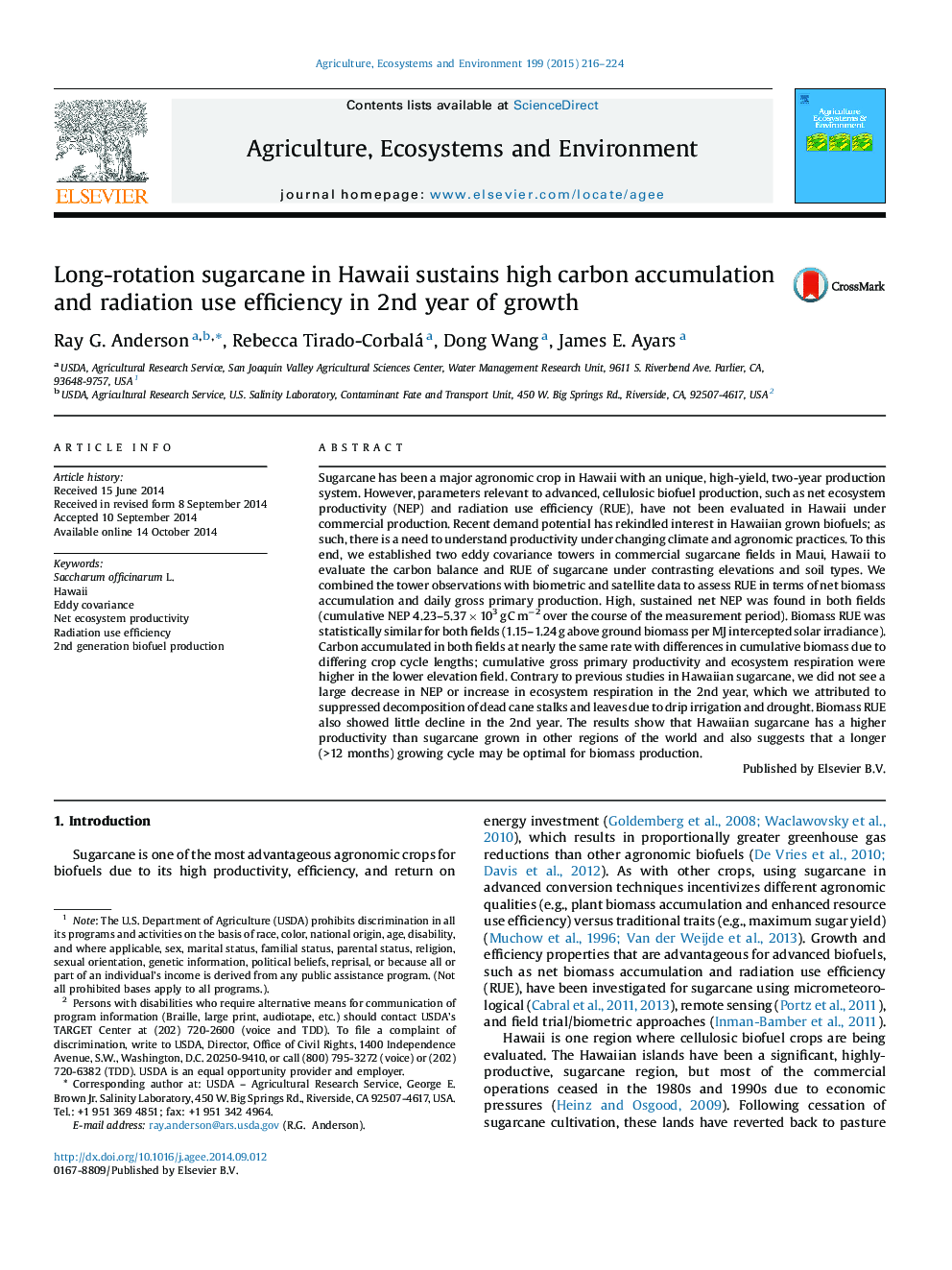| کد مقاله | کد نشریه | سال انتشار | مقاله انگلیسی | نسخه تمام متن |
|---|---|---|---|---|
| 2413860 | 1552053 | 2015 | 9 صفحه PDF | دانلود رایگان |
• Hawaiian sugarcane has very high sugar productivity but less known potential for advanced biofuels.
• Productivity in two fields was high and, unexpectedly, did not show large declines in 2nd year.
• Rates of carbon accumulation did not vary across elevation or soil types at two eddy covariance sites.
• Results indicate that biomass productivity is higher than other sugarcane growing regions.
• Longer crop cycle may result in higher overall biomass production than annual cycle.
Sugarcane has been a major agronomic crop in Hawaii with an unique, high-yield, two-year production system. However, parameters relevant to advanced, cellulosic biofuel production, such as net ecosystem productivity (NEP) and radiation use efficiency (RUE), have not been evaluated in Hawaii under commercial production. Recent demand potential has rekindled interest in Hawaiian grown biofuels; as such, there is a need to understand productivity under changing climate and agronomic practices. To this end, we established two eddy covariance towers in commercial sugarcane fields in Maui, Hawaii to evaluate the carbon balance and RUE of sugarcane under contrasting elevations and soil types. We combined the tower observations with biometric and satellite data to assess RUE in terms of net biomass accumulation and daily gross primary production. High, sustained net NEP was found in both fields (cumulative NEP 4.23–5.37 × 103 g C m−2 over the course of the measurement period). Biomass RUE was statistically similar for both fields (1.15–1.24 g above ground biomass per MJ intercepted solar irradiance). Carbon accumulated in both fields at nearly the same rate with differences in cumulative biomass due to differing crop cycle lengths; cumulative gross primary productivity and ecosystem respiration were higher in the lower elevation field. Contrary to previous studies in Hawaiian sugarcane, we did not see a large decrease in NEP or increase in ecosystem respiration in the 2nd year, which we attributed to suppressed decomposition of dead cane stalks and leaves due to drip irrigation and drought. Biomass RUE also showed little decline in the 2nd year. The results show that Hawaiian sugarcane has a higher productivity than sugarcane grown in other regions of the world and also suggests that a longer (>12 months) growing cycle may be optimal for biomass production.
Journal: Agriculture, Ecosystems & Environment - Volume 199, 1 January 2015, Pages 216–224
